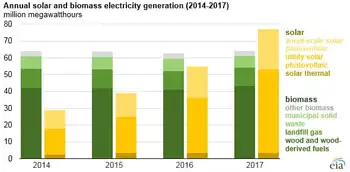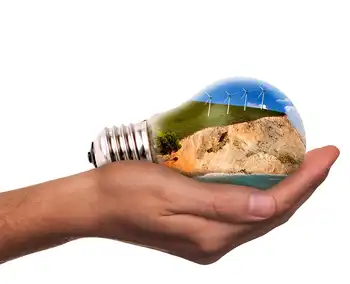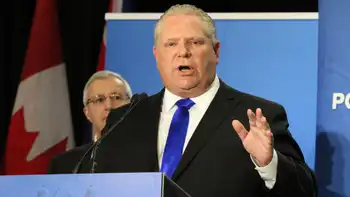California utilities get green mandate
By Associated Press
High Voltage Maintenance Training Online
Our customized live online or in‑person group training can be delivered to your staff at your location.

- Live Online
- 12 hours Instructor-led
- Group Training Available
California utilities and other electricity providers have until the end of 2020 to draw 33 percent of their power from solar panels, windmills and other renewable sources.
Brown signed the bill at a solar panel manufacturing plant near San Jose.
"There are people who think we can drill our way to happiness and prosperity," the Democratic governor told hundreds of plant workers and other supporters gathered to witness the signing. "Instead of just taking oil from thousands of miles away, we're taking the sun and converting it."
Previous California law required utilities to get 20 percent of their power from renewable sources.
Supporters of the higher standard said it will reassure investors and keep money flowing to develop alternative energy sources. They say that will lead to cleaner air and job growth in the clean-energy sector.
Critics of the legislation said sticking with traditional energy sources such as coal and natural gas would be cheaper, keeping costs down for business and residential ratepayers. Business groups point to estimates that the higher standard could drive up electricity costs for California ratepayers by more than 7 percent, despite language in the legislation to limit cost increases.
"Industry in California already pays electricity rates about 50 percent higher than the rest of the country," said Gino Di-Caro, spokesman for the California Manufacturers and Technology Association. "With 33 percent, those rates are going to go up even more."
Brown said he would look carefully at whether the new standard will drive up electricity costs but said increasing use of renewable sources makes sense for California and the country.
"I know one thing: Being dependent on foreign fossil fuel is not good for our economy, it's not good for our security, and it's not good for our climate," the Democratic governor told The Associated Press in a telephone interview. "We have to be bold."
Making California less reliant on fossil fuels will benefit the state's air quality and make oil supply a smaller factor in America's foreign policy, said state Sen. Joe Simitian, who carried the legislation.
The Democrat from Palo Alto was instrumental in setting the current renewable power standard at 20 percent and has been working for four years to get the increase to 33 percent.
Republican Gov. Arnold Schwarzenegger vetoed an earlier version of the bill but issued an executive order that called for 33 percent renewable power by 2020. Simitian kept pushing to get the higher standard written into state law, which is harder to undo than an executive order.
When his bill died on the Senate floor as the 2010 legislative session ended, Simitian said the action sent a chill through the renewable power generation market. Supporters said the new bill sends a clear signal to financial backers that demand for renewable power will keep growing.











